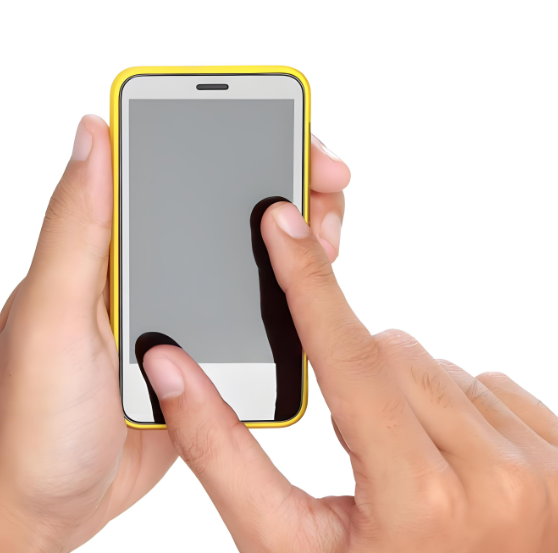The Impact of Lifeline Phones on Communities: Stories of Connection and Empowerment
Behind the statistics and policies of the Lifeline Phone Program are real people—parents, seniors, students, and job seekers—whose lives have been transformed by access to a subsidized phone.

These devices do more than enable calls and texts; they foster independence, create opportunities, and strengthen communities. From rural towns to urban neighborhoods, Lifeline phones are quietly driving change, one connection at a time.
Empowering Job Seekers and Workers
For many low-income individuals, a Lifeline phone is the key to securing and maintaining employment. Consider Maria, a single mother in Detroit who had been jobless for over a year. Without a phone, she struggled to respond to job postings or coordinate interviews. "Employers would call, and I’d miss the chance because I couldn’t be reached," she recalls. After qualifying for a Lifeline phone, Maria could apply for jobs online, schedule interviews via text, and even attend virtual interviews using her phone’s data plan. Within three months, she landed a position as a customer service representative. "That phone didn’t just give me a way to communicate—it gave me my independence back," she says.
Lifeline phones also support workers in low-wage jobs, where flexibility is critical. Javier, a construction worker in Texas, uses his Lifeline phone to receive last-minute shift updates, coordinate rides with coworkers, and access online training to advance his skills. "If I miss a text about a schedule change, I could lose a day’s pay," he explains. "Having a reliable phone means I can keep my job and support my family."
Bridging Educational Gaps for Students
In an era where homework, classes, and school communications happen online, a Lifeline phone can be the difference between a student falling behind and thriving. Take 16-year-old Jamal, who lives in a rural area of Mississippi with limited internet access. His family can’t afford a home computer, but Jamal uses his Lifeline phone to access his school’s learning platform, submit assignments, and video-call his teachers for help. "Before, I’d have to stay after school to use the library computers, but now I can do my work at home," he says. His grades improved significantly after receiving the phone, and he now dreams of attending college.
Parents also benefit. Latisha, a mother of two in Atlanta, uses her Lifeline phone to check her children’s school grades, communicate with teachers, and sign up for parent-teacher conferences. "I used to miss important updates because I couldn’t afford a phone," she admits. "Now I’m involved in their education, and they’re doing better because of it."
Enhancing Healthcare Access
For low-income individuals—especially seniors and those with chronic illnesses—Lifeline phones are a lifeline to healthcare. Mrs. Gonzalez, an 82-year-old widow in Florida with diabetes, uses her phone to set reminders for medication, schedule doctor’s appointments, and participate in monthly telehealth check-ins. "I can’t drive anymore, so going to the doctor is hard," she says. "With this phone, I can talk to my nurse from home and get the care I need."
During the COVID-19 pandemic, this impact multiplied. As clinics shifted to telehealth, Lifeline users could consult doctors without risking exposure or incurring transportation costs. A 2021 FCC survey found that 73% of Lifeline phone users relied on their devices for pandemic-related healthcare needs, from scheduling vaccine appointments to accessing mental health resources.
Strengthening Family and Community Ties
Isolation is a common challenge for low-income households, but Lifeline phones help bridge that gap. James, a veteran in Ohio struggling with PTSD, uses his phone to stay in touch with his adult children, who live out of state. "We video-call every week, and it keeps me going," he says. "I don’t feel so alone anymore."
In tribal communities, where geographic isolation is often compounded by limited resources, Lifeline phones play an even more critical role. Members of the Navajo Nation, for example, use their devices to coordinate community events, share information about local resources (like food drives), and stay connected to family members spread across vast rural areas. "Our community is tight-knit, but we’re spread out," explains a tribal elder. "The phone keeps us connected, even when we can’t be together."
Addressing Criticisms and Building a Better Program
Despite these success stories, the Lifeline Phone Program has faced criticism. Some argue that it’s prone to fraud or that the devices are underused. However, stricter eligibility checks (including a national database to prevent duplicate benefits) have reduced fraud by 40% since 2017. As for usage, studies show that 91% of Lifeline users rely on their phones daily for essential tasks, from work to healthcare.
To build on its success, advocates are pushing for improvements: expanding data limits to meet growing needs (e.g., remote learning), increasing access in rural areas with poor coverage, and offering digital literacy training to help users maximize their devices. "It’s not enough to give someone a phone—we need to ensure they know how to use it," says a community organizer in Chicago who runs workshops on smartphone basics for Lifeline users.
A Vision for the Future
As technology advances, the potential of Lifeline phones will only grow. Imagine a senior using their phone to monitor their heart rate via a health app, a student attending a virtual college class, or a farmer accessing weather forecasts to protect their crops—all made possible by affordable connectivity. These scenarios aren’t just hypothetical; they’re already happening, thanks to the Lifeline Program.
At its core, the Lifeline Phone Program is about dignity. It says that everyone, regardless of income, deserves to stay connected—to their jobs, their families, their schools, and their communities. The stories of Maria, Jamal, Mrs. Gonzalez, and countless others remind us that a simple phone can be a powerful tool for change. In a world where connectivity equals opportunity, Lifeline phones are more than devices—they’re pathways to a better life.